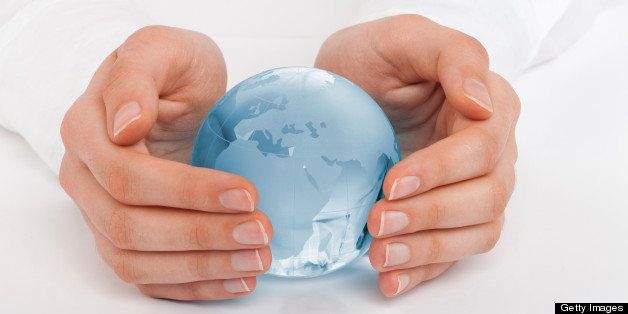
Computers transformed how we do everything, and today, innovations in clean tech are transforming everything again -- including reducing the copious amounts of energy those ubiquitous computers use. Earth Day is a great time to look at some of these clean tech innovations and make our Earth Day Resolutions.
For consumers, we have innovations that conserve energy, help us conserve water, and provide information to help us make more "eco-friendly" purchasing decisions:
1.New thermostats: The Nest, taglined "the learning thermostat," which "learns" your comfort levels and adapts the temperature when you're away or asleep. Or, the Homewerks Radio Thermostat, which does the same. The U.S. Department of Energy has said that each degree of temperature you raise the temperature in warm weather (or reduce it in cool weather) saves the equivalent percent in your energy bill (1 degree =1 percent savings).
2.How Much Water Do You Use?: The new Water Pebble reads how much water you use in the shower and gives you light cues when your "allowance" has been spent. It uses the familiar green/yellow/red lighting cues from traffic signals.
3.Environmental Impact Labels on Products: Our dollars make an impact, so how we spend them matters. There are new labeling systems and a new app to help you spend sustainably. The EPA has its "Design for the Environment" label, and the venerable Good Housekeeping Seal of Approval has come out with a Green Seal, complete with the same two-year warranty. The Green Guide, which rated over 100,000 products, has an app to read ratings of products in the store. The app is cool, but I question some of its ratings, because a product I scanned that has the excitotoxin monosodium glutamate (MSG) in it rated higher than plain wheat crackers.
Companies and cities consume the most energy and water, however, and there are three important innovations to reduce that consumption:
1.Energy management software for buildings: There are lots of energy management systems out now. One is LoadIQ, which shows how much energy each of the appliances in each of your business locations is using in real time. With LoadIQ you can catch maintenance problems before they come crises too, which could save a small fortune.
2.Water management:: "One might argue that the next frontier of innovation is at the crossroads of water efficiency and energy, because so much energy is used to move water," said John Argo, serial clean tech entrepreneur. The EPA's website has a great discussion of the linkage between water and energy. "Water-related energy use in California also consumes approximately 20 percent of the state's electricity," according to a report by the California Department of Water Resources in 2008.
3.Supply Chain - Manufacturers use the most water. For example, manufacturing a pair of jeans uses 3,000 gallons of water. Walmart and other companies have been aggressively "greening" their supply chains, demanding their suppliers use sustainable business practices. Walmart funds the Sustainability Consortium developer of the Sustainability Index, which measures sustainability across over 100 categories. Their criteria cover the product lifecycle's carbon footprint (from production to disposal, including recycling), and "people and community." The Index has its critics, though; reducing the carbon footprint of the manufacturing and retail supply chains is hugely important.
Renewable energy sources and the smart grid are tremendous innovations as well, of course. As more renewables become more accessible, more prevalent and more economical - and as the smart grid becomes a reality - there will be more innovations as well. Think of all the jobs all these new technologies are creating.....
The more we use these new cool inventions and systems, the more jobs will be created.
So, how well did you "go green" the past year? What are your Earth Day Resolutions? What new steps will you take?
How about using less plastic and recycling more? The Environmental Protection Agency website states that, "Only 8 percent of the plastic generated was recovered for recycling."
We can do better.
Tell us your Earth Day Resolutions in the comment area below.
